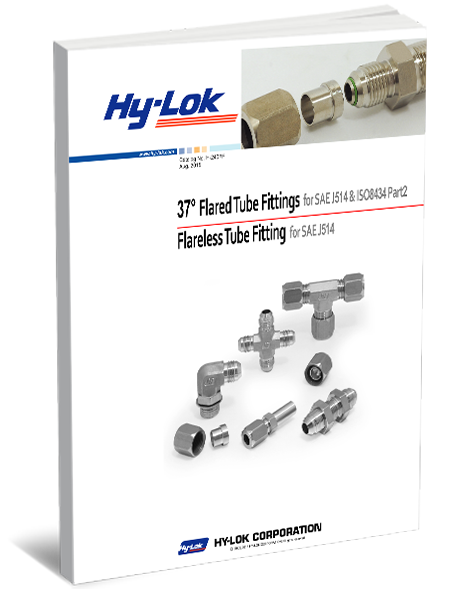It is widely known throughout all industries that hydraulic fluid systems use countless types of fittings and connectors with a variety of thread forms and sealing methods. Below, we will look at the different types of hydraulic fittings and explore which fitting might be more suitable for your production process.
Why Are There Different Types of Hydraulic Fittings?
Since hundreds of different hydraulic fittings and connectors are available, you’ll always have to identify what type of fitting you need for your application. Generally, there are three standard types of hydraulic fittings, and whatever one you use must be able to tightly seal and firmly hold the connection under high pressure. The different types of fittings differ from one function to another and depend on the type of pipe being used. Some hydraulic fittings require a sealer to ensure that there will be no leakage around the connection, while others are manufactured with tapered thread to provide a leak-free connection. Before purchasing your next supply of hydraulic fittings, make sure that they can withstand the pressure of the fluid and resist the heavy vibrations that many systems are subject to.
What Are The Types of Hydraulic Fittings?
- Tapered Threads
Tapered thread fitting is one of the most popular hydraulic connectors in different industries. In order to make the connection between the pipes as tight as possible, tapered threads are cut on a taper with the same diameter as the pipe. Unfortunately, tapered threads cannot be used without a sealer. They must be installed using tape or chemical sealant to ensure they don’t leak.
- Metal Seal Connectors
Metal seal connectors are also commonly manufactured to overcome the limitations of an additional sealant and enhance hydraulic fittings’ efficiency. Instead of only using a tapered thread, manufacturers use an additional machined face that can handle the high pressures of fluid flow AND works as a seal.
- Soft Seal Connectors
Companies also rely on a more modern hydraulic fitting type: the soft seal connector. This type of fitting uses an elastomeric seal that is either made from a synthetic or natural material that eliminates any chance of leakage. A rubber O-ring is usually used as the sealing connector that creates a leak-free seal when compressed. Not only do O-rings resist the intense vibrations of several hydraulic systems, but they are also relatively quick to install, easy to replace and provide a leak-free seal.
High-Quality Hydraulic Fittings in Canada
With the rise of hydraulic industrial machines in Canada, the search for high-quality hydraulic fittings has rapidly increased. Industries have become increasingly dependent on NPT fittings in North America, while others rely on SAE fittings. Due to the popular demand, some suppliers have one fitting or the other and struggle to provide customers with the required fitting supply. However, at Hy-Lok Canada, we not only supply high-quality hydraulic fittings across Canada, but we also manufacture them. Our fittings inventory includes SAE J514 tube fittings, JIS B2351, DIB 2353 & ISO 8434 -1, instrument thread and weld fittings for 1/16” thru 2” and more!
We understand the challenges of waiting for the same component to be supplied from your regular manufacturer and the impact this has on your production process. This could sometimes delay or completely stop your production process, resulting in losing money for every day of delay. Instead of waiting for your supplier to restock their inventory, you can order your next supply from Hy-Lok Canada, as our team of engineering specialists has designed all our fluid system components, valves and high-performance fittings to be 100% interchangeable with Swagelok and other manufacturers’ components.
Partner with Hy-Lok Canada Today
Explore our extensive inventory of fittings and valves for all fluid control systems, or contact us today to order your next supply!




